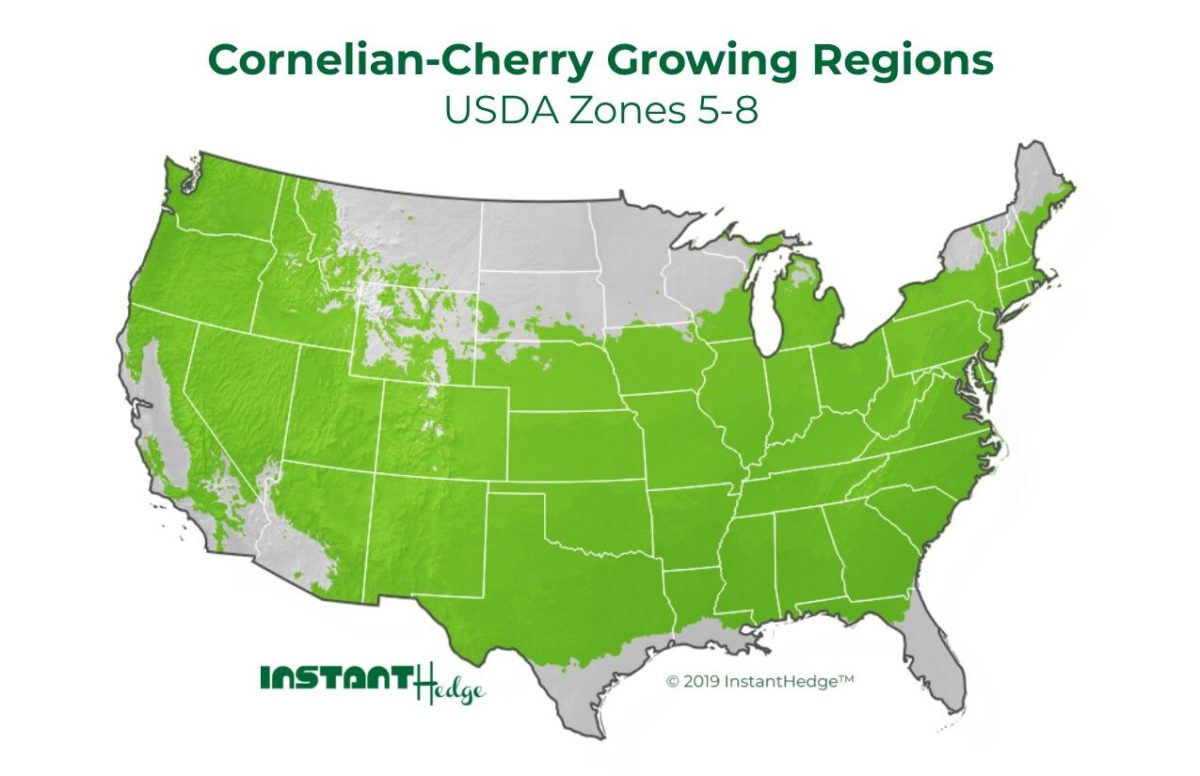

large shrubs or small trees with early flowering (Hamamelis x intermedia, Amelanchier x grandiflora, Cercis canadensis, Cornus florida, etc.).native to Central and Southern Europe and Western Asia.cannot maintain turf underneath mature specimens due to its dense shade (unless it is considerably limbed up and thinned with age).invasive (from a spreading branch perspective) upon other plants and structures with age.larger yet more dependable alternative to Forsythia, as its floral buds are not always Winter hardy in Northern climates.


opposite, broad elliptic, shiny dark green leaves have wavy entire margins and veins parallel to the margins, on stems that exhibit a bicolor by late Summer and throughout Winter, having purplish (sun-tanned) uppersides and greenish undersides, with plump floral buds occuring in the leaf axils or on short spur shoots.light brown, exfoliating to lighter tan-yellow shades underneath, subtlely ornamental and seldom noticed because of the low, wide branching.vegetative buds are relatively small and very pointed.0.25" globular floral buds mature in late Summer and are prominent, being pendulous and either axillary from the nodes on first-year wood, or on short spur shoots from older wood.the first season's green stem growth changes color by late Summer, becoming red-brown to purplish on top of the stem and remaining light green on the bottom of the stem this bicoloration of the youngest stems continues into the following early Spring and also occurs on several other lesser-known Dogwoods, but not as obviously as on Cornelian Cherry Dogwood.0.5" long oblong fruits are arranged sparsely along the stems andĪre quite attractive when viewed up-close, but are usually hidden by the Summer foliageĪnd therefore are rarely noticed by humans, but are quickly eaten by birds and squirrels.immature green fruits turn to bright cherry red in July.Noticeable when in flower, made much more effective when planted in front of a solid-colored background (such as evergreen English Ivy on a foundation wall, or against a backdrop of evergreen Norway Spruce), as the individual flowers are relatively small and less noticeable when in front of a drab-colored background earliness to blossom before foliage emergence makes this shrub.small yellow inflorescences are numerous and clustered on the bare stems in March, effective for about three weeks in late Winter and heralding the impending arrival of Spring.

Cornus mas benefits full#
prefers moist, well-drained soils in full sun, but is adaptable to poor soils, dry soils, soils of various pH, heat, and drought.upright rounded to upright spreading growth habit, either multi-trunked or single-trunked and branching low to the ground.large ornamental shrub or small ornamental tree.


 0 kommentar(er)
0 kommentar(er)
